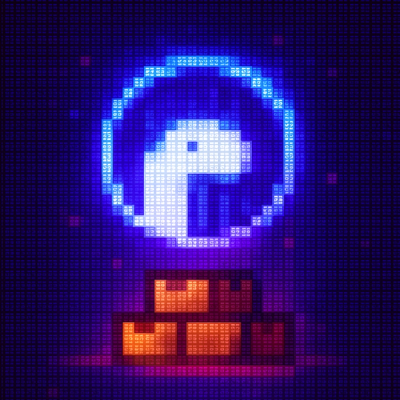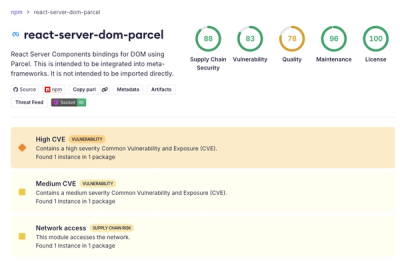
Security News
Deno 2.6 + Socket: Supply Chain Defense In Your CLI
Deno 2.6 introduces deno audit with a new --socket flag that plugs directly into Socket to bring supply chain security checks into the Deno CLI.
cirq-web
Advanced tools

Cirq is a Python package for writing, manipulating, and running quantum circuits on quantum computers and simulators. Cirq provides useful abstractions for dealing with today’s noisy intermediate-scale quantum (NISQ) computers, where the details of quantum hardware are vital to achieving state-of-the-art results. For more information about Cirq, please visit the Cirq documentation site.
This Python module is cirq-web, which allows users to take advantage of
browser-based 3D visualization tools and features in Cirq. cirq-web also
provides a development environment for contributors to create and add their
own visualizations to the module.
This module is built on top of Cirq; installing this module will
automatically install the cirq-core module and other dependencies. There are
two installation options for the cirq-web module:
To install the stable version of cirq-web, use
pip install cirq-web
To install the latest pre-release version of cirq-web, use
pip install --upgrade cirq-web~=1.0.dev
(The ~= has a special meaning to pip of selecting the latest version
compatible with the 1.* and dev in the name. Despite appearances,
this will not install an old version 1.0 release!)
If you would like to install Cirq with all the optional modules, not just
cirq-web, then instead of the above commands, use pip install cirq for the
stable release or pip install --upgrade cirq~=1.0.dev for the latest pre-release
version.
Documentation for cirq-web can be found in the README file located in the
module's subdirectory in the Cirq repository on GitHub. To get started
with using Cirq in general, please refer to the Cirq documentation site.
Below is a quick example of using cirq-web to generate a portable 3D
rendering of the Bloch sphere:
import cirq
from cirq_web import BlochSphere
# Prepare a state
zero_state = [1+0j, 0+0j]
state_vector = cirq.to_valid_state_vector(zero_state)
# Create and display the Bloch sphere
sphere = BlochSphere(state_vector=state_vector)
sphere.generate_html_file()
This will create an HTML file in the current working directory. There are additional options to specify the output directory or to open the visualization in a browser, for example.
You can also view and interact with a Bloch sphere in a Google Colab notebook or Jupyter notebook. Here is an example:
import cirq
from cirq_web import BlochSphere
# Prepare a state
zero_state = [1+0j, 0+0j]
state_vector = cirq.to_valid_state_vector(zero_state)
# Create and display the Bloch sphere
sphere = BlochSphere(state_vector=state_vector)
display(sphere)
You can find more example Jupyter notebooks in the cirq-web subdirectory of
the Cirq repository on GitHub.
For more information about getting help, reporting bugs, and other matters related to Cirq and the Cirq-Web integration module, please visit the Cirq repository on GitHub.
Cirq is not an official Google product. Copyright 2019 The Cirq Developers.
FAQs
Web-based 3D visualization tools for Cirq.
We found that cirq-web demonstrated a healthy version release cadence and project activity because the last version was released less than a year ago. It has 2 open source maintainers collaborating on the project.
Did you know?

Socket for GitHub automatically highlights issues in each pull request and monitors the health of all your open source dependencies. Discover the contents of your packages and block harmful activity before you install or update your dependencies.

Security News
Deno 2.6 introduces deno audit with a new --socket flag that plugs directly into Socket to bring supply chain security checks into the Deno CLI.

Security News
New DoS and source code exposure bugs in React Server Components and Next.js: what’s affected and how to update safely.

Security News
Socket CEO Feross Aboukhadijeh joins Software Engineering Daily to discuss modern software supply chain attacks and rising AI-driven security risks.